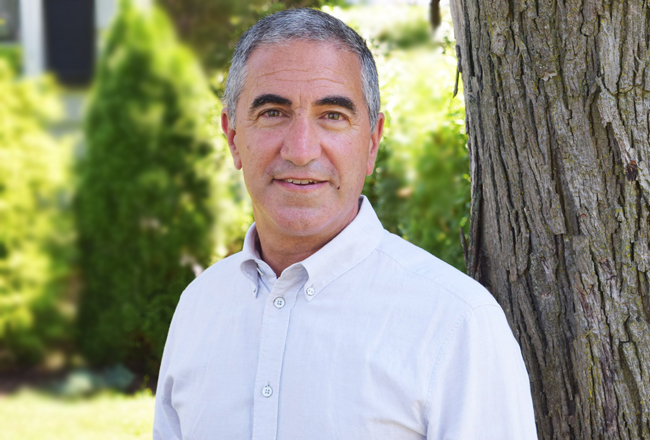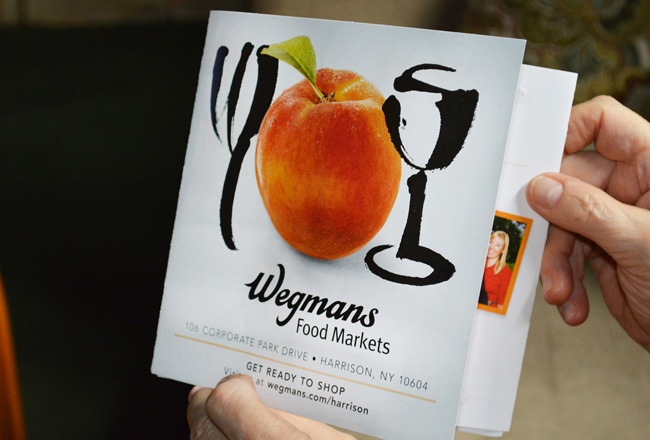
When it comes to investing, it is easy to be lured by the financial equivalent of bright shiny objects ”” consider the appeal of cryptocurrency, fintech companies, app providers and other entities that generate a surplus amount of attention. Investing in soybeans or corn, on the other hand, is not exactly a sexy concept. But for Sal Gilbertie, founder and president of Teucrium Trading, those commodities are the smartest investments on the market.
Teucrium Trading is an exchange-traded fund (ETF) provider involved in U.S. agriculture, with funds focused on corn, soybeans, sugar and wheat plus a fifth fund that combines the four commodities. In this edition of Suite Talk, Business Journal Senior Enterprise Editor Phil Hall talks with Gilbertie on the appeal of agriculture-based commodities.
When did this company get started and how did you get it into motion?
“We were right after the 2008 crisis. I realized there was no agricultural ETF single commodity. I went down to the New York Stock Exchange to get my tickers and I said to them, ”˜I wish you had four letters for the ticker symbol ticker instead of the three-letter ticker. They said, ”˜We just merged with the NASDAQ, so you can do that.” I asked if they had ”˜CORN”™ and the guy said, ”˜Let me look.”™ He walked down the hall, came back and said, ”˜Yeah, I have CORN.”™
“While he was gone, I was thinking if he had soy beans, so I asked him if he had ”˜SOYB.”™ He went down the hall and came back. Finally, I just gave him my whole list and I got these great tickers.
“But what I didn”™t count on was there would be a lot more regulatory oversight ”” which is fine because it makes the markets safer. There”™s no question the United States markets are the safest in the world. And we have a very good relationship with the regulators.”
How do you convince investors that these are the best funds to pursue?
“People have no idea that corn is pervasive in a global economy. Did you know 4,000 of the 10,000 items in the average grocery store have corn? That when you pull into a service station to fill up your SUV, you use about a bushel of corn? Corn”™s number one use in the U.S. is ethanol, and it is the number two use globally. The number one use globally and number two use in the U.S. is animal feed. If you consume any meat product, you are consuming corn, okay? If you consume any beverages that you pull out of a refrigerator in a fast food stop or at a petrol station when the kids jump out and buy the beef jerky sticks and Snapple, they”™re consuming high fructose corn syrup. And corn starch holds all paper together.
“People have no idea that it”™s not possible to exist in the modern global economy and not consume a grain, particularly corn. In my view, people would want that. Putting grains in your portfolio is a logical thing to do because they are very long price cycles. On the days when the stock market”™s down 4% or 5%, we get calls with people saying, ”˜Wow, I”™m so glad corn is the only thing that”™s okay.”™”
How have these commodities been impacted by the trade difficulties between the Trump administration and China?
“Well, it”™s very interesting. It impacted our export sales of grains negatively, but headlines attract assets. When we first launched the corn fund in 2010, there was a drought the next year and a lot of assets flowed ”” it became our biggest fund and stayed that way when Russia invaded Ukraine. We were a $3 million fund and within 12 weeks it was a $40 million (fund) because Ukraine is a big wheat export.
“Our soybean fund traded between $8 million to $10 million until Trump put the tariffs on. The price went down on soybeans, but the assets in our fund went way up because it got headlines.
“There are a lot of investors who tell us, ”˜I”™m buying corn and I understand I may have to hold it for several years. But when there”™s a drought, it doubles.”™ So, we”™re starting to get layered into people”™s portfolios. People are starting to both trade our funds opportunistically and, more importantly, actually see grains are a risk-reducing part of the portfolio.”
Who are your investors? Are they primarily institutional investors, private investors or a mix?
“It”™s a mix. In fact, more people have our funds in retirement accounts than in any other vehicle. We think it is because there are tax advantages on a retirement account, and with a lot of the retail investors that”™s the only money they have to invest.”
You are a Bridgeport resident, but your company is headquartered in Vermont and your staff is in different locations. How did you wind up with that configuration?
“We have an eight-person company. I live in Bridgeport but my office is in Easton on my dad”™s certified organic farm. Our headquarters for regulatory visits is Burlington and we have a very nice office on the lake. Right now, that rent is waived because they”™re not letting anybody in the building to go in, which is great.”
Which is the most active of the five funds?
“If you mean active as in terms of number of shares per day traded, the simple answer is whichever is in the headlines. Corn was the last week of June, soybeans were most of all last year. In terms of dollars traded, it”™s probably soybeans and corn because it”™s a much lower price per share.”
Are you planning to add any additional funds?
“We are, but until you file and even after you file those lists, you”™re not really allowed to talk about that. Right now, there are only concepts on the drawing board. There are no concrete plans.”
Did you ever consider doing a hemp fund?
“Yes. In fact, we filed a fund when the laws changed. But it”™s very important to be first to market in something and another fund kind of beat us to it. We had a different tack ”” we were just going to be the medicinal part of it ”” and we filed but never took it anywhere because we were beaten to market substantially by someone else.”
What do you predict will be the next agricultural commodity that will attract investors”™ attention?
“It”™s called ”˜pulses”™ ”” lentils and those kinds of things. I don”™t think they”™re going to ever be the scale of corn, but there”™s no question that the beyond-meat movement with nonanimal protein substitutes is where we”™ll go.
“Do you know the Agriculture Department actually has an active program trying to get ex-tobacco farmers to grow chickpeas? Most chickpeas are in a very concentrated areas in the Pacific Northwest, but if there were to be a disease there could actually be a severe chickpeas shortage. I haven”™t studied the science behind it, but ex-tobacco farms are great for growing chickpeas. And the USDA is trying to promote people all around the country, particularly in Virginia and the Carolinas, to grow chickpeas because they want to grow things in geographically diverse regions in case there is a disease.”





















